After a blazing hot summer, it made sense that 2023 ended up being the hottest year on record for the area. It may come as a surprise, though, that 2024 broke that record and is now the warmest year to date at Camp Mabry. 2024’s average temperature was 72.8° F – half degree hotter than 2023. Last year was also the 37th driest on record for Austin.
Rainfall
In terms of rainfall, December brought an average of 1.5 inches to the Hill Country— approximately 1.1 inches below the historical monthly average (Figure 1). The most recent month with above-average rainfall was July 2024. Last year the region received an average of 31.2 inches of rainfall, which is 5.1 inches below the typical annual average.

Figure 1. Monthly deviation from average and monthly total rainfall in District’s territory.
Drought Triggers and Status
The District remains in Stage III Critical Drought at this time. You see Barton Springs flow and Lovelady groundwater levels by visiting www.bseacd.org/drought-status.
Barton Springs Flow
As of January 8, the 10-day average flow at Barton Springs is 16 cubic feet per second (cfs) (Figure 2). Recent maintenance and spillway operations have influenced pool levels, potentially affecting the accuracy of the USGS real-time gauge. To address this, manual measurements have been conducted, with the most recent reading on December 31 showing a flow of 16.3 cfs. This value is near the Stage IV Exceptional Drought threshold of 14 cfs. To closely monitor any progression into a deeper drought stage, staff will perform bi-weekly manual measurements. The next measurement is scheduled for mid-January.
Figure 2. Barton Springs flow for the last five years.
Lovelady Monitor Well
On January 8, the 10-day average water level at the Lovelady monitor well was recorded at 458.3 feet above mean sea level (ft-msl). This is within the District’s Stage III Critical Drought threshold and approximately 1.2 feet above Stage IV (Figure 3). Without rain we could see water levels at Lovelady dip into the Stage IV drought stage as soon as February.
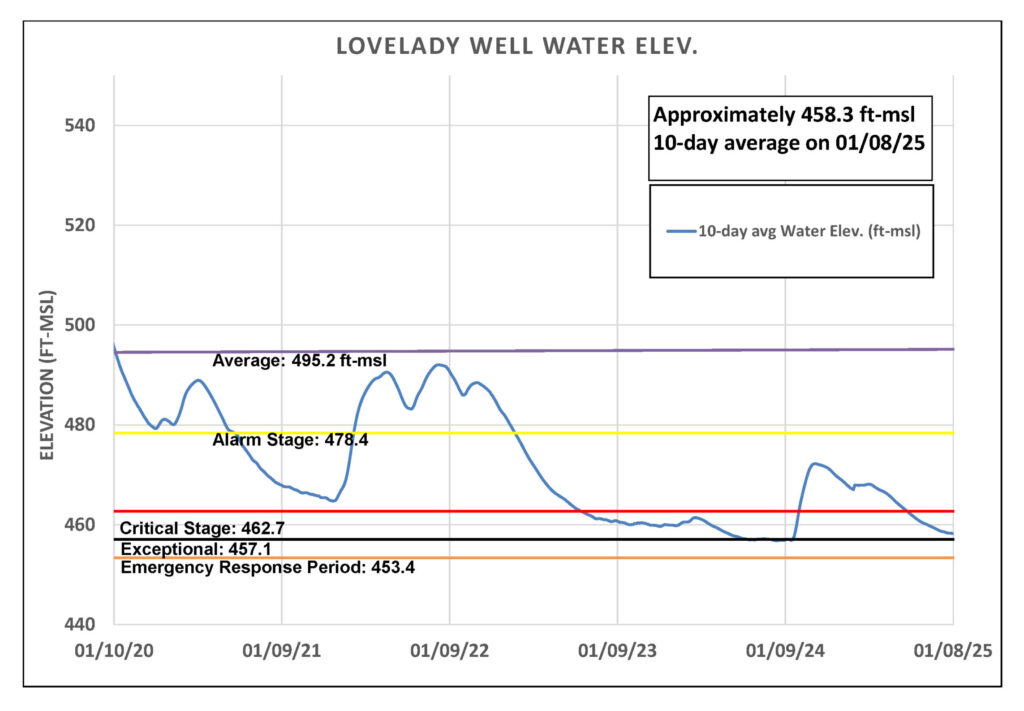
Figure 3. Lovelady groundwater level over the last five years.
Trinity Aquifer
The water level in the Borheim Middle Trinity monitor well, located between Buda and Driftwood, had been steadily declining since late May 2024. However, rains in November and December have slightly reversed this trend, raising the water level by approximately two feet. Levels could continue increasing with additional rainfall in January (figure 4).
Jacob’s Well Spring (JWS) showed little to no response to December rainfall, with flows never exceeding 0.2 cfs. In contrast, the Blanco River at Wimberley gauge has maintained steady flows ranging from 6 to 8 cfs since mid-November.
Figure 4. Borheim (Middle Trinity) monitor well water-level elevation.
Conservation: Protecting Your Well and Pipes from Freezing Temperatures
Though temperatures this fall and winter have been significantly above average, Texans know a cold spike is always lurking around the corner. When cold temperatures hit, it’s important to act and protect pipes and wells from freezing. A busted pipe can waste tens of thousands of gallons in a single home and millions of gallons in the greater community.
Some simple steps well owners, homeowners, and renters can take to prevent such damage and water loss include:
- Drain and detach garden hoses; then cover the faucet with an outdoor foam cover (as seen below).
- Drain irrigation systems and shut off watering cycles during freezing temperatures.
- Maintain a dripping faucet to allow water to circulate freely and constantly, preventing it from freezing.
- Insulate outdoor pipes and wellheads.
- Locate your water shut off valve in case of an emergency.
- Check insulation around well houses and seal any obvious gaps.
Learn more about how to winterize your home in our full article.

